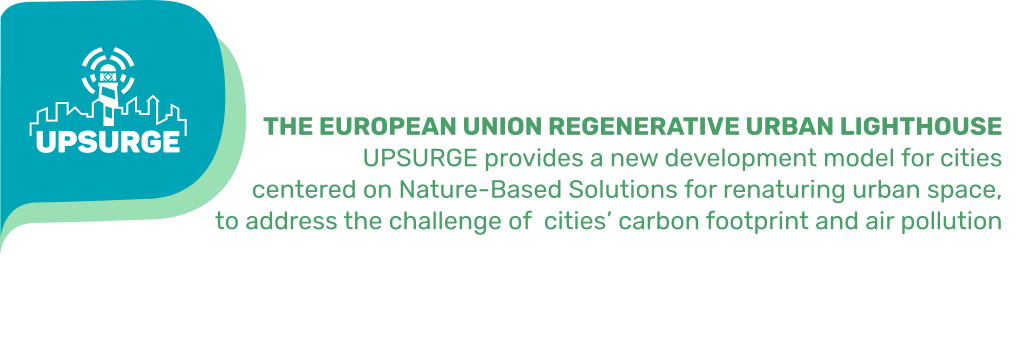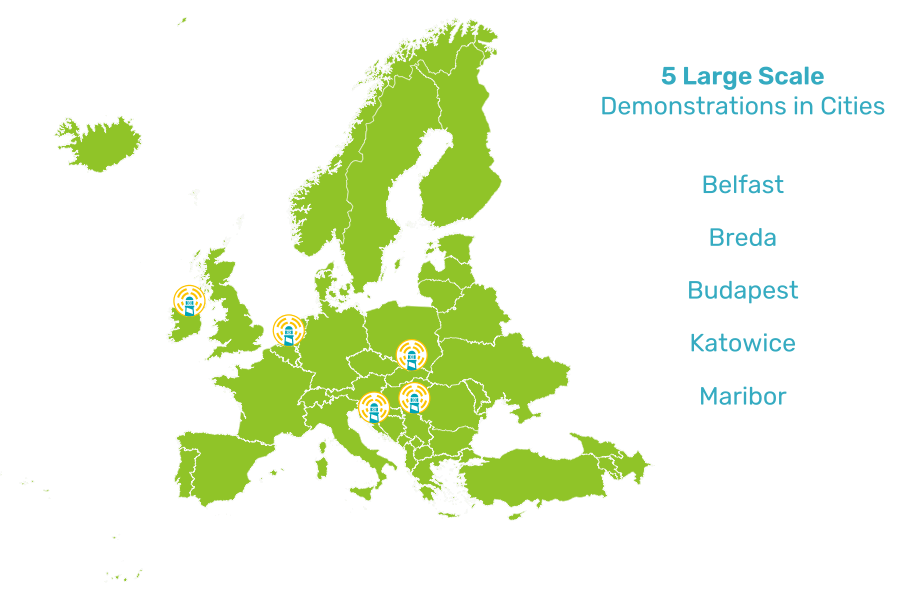UPSURGE’s main objective is to build the EU Regenerative Urban Lighthouse as a reference framework offering guided support on how tested and verified NBS can be strategically implemented to significantly improve the multitude of problems faced by cities.
The Lighthouse will be a knowledge and practice-based European framework created on real-life tested NBS practices implemented by different innovative EU cities, research institutions and companies. As the knowledge core of the Lighthouse, the Urban Regenerative Development.
Latest news
-
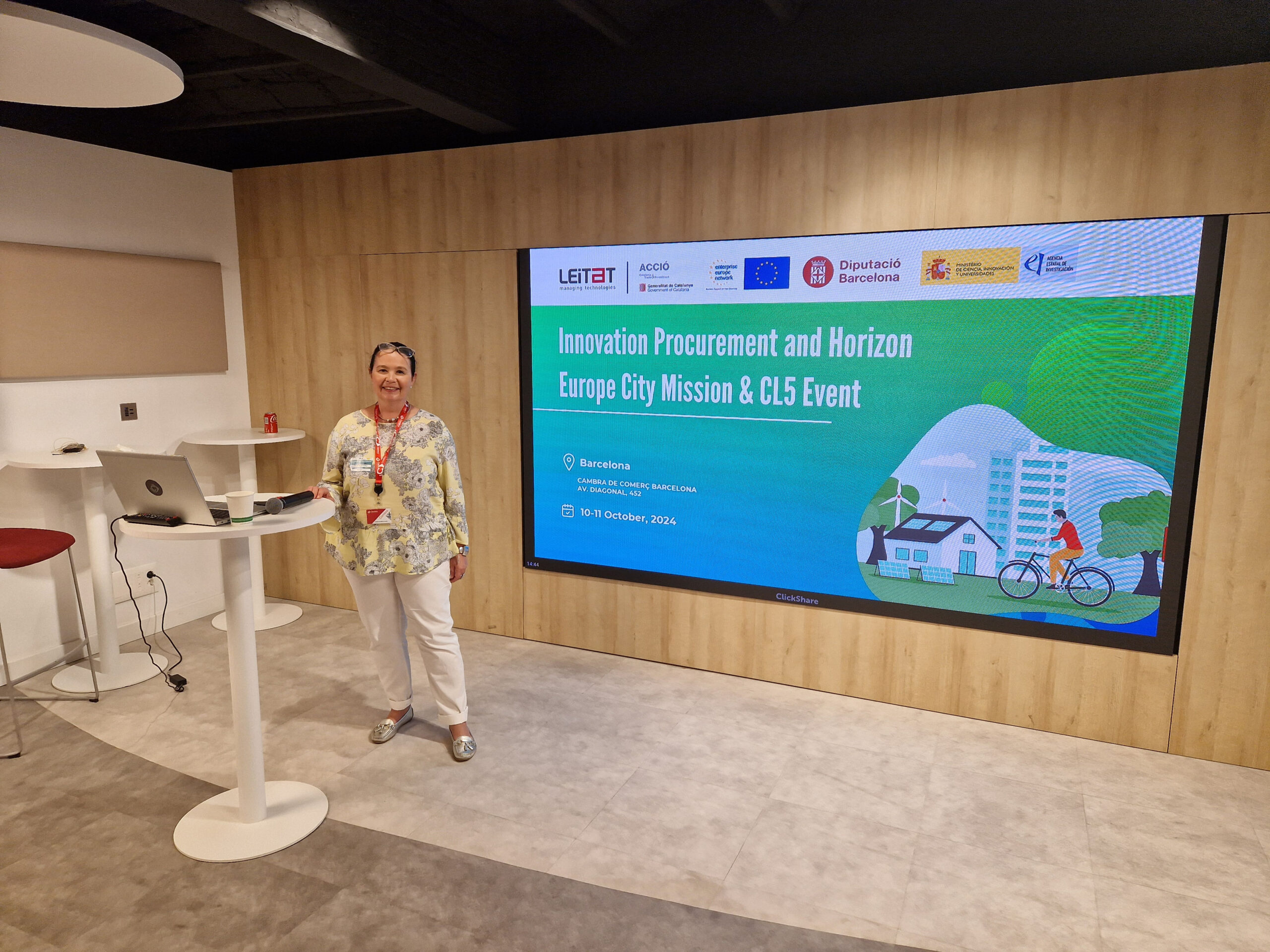
EU Regenerative Urban Lighthouse presented in Barcelona
Our EU Regenerative Urban Lighthouse has been presented at the Innovation Procurement & Horizon Europe City Mission and CL5 Brokerage Event organised by LEITAT on 10-11 Oct. in Barcelona. Our Lighthouse has been designed to support cities in their transition toward sustainability, focusing on regenerative urban practices that promote greener, more resilient environments and enhance…
-
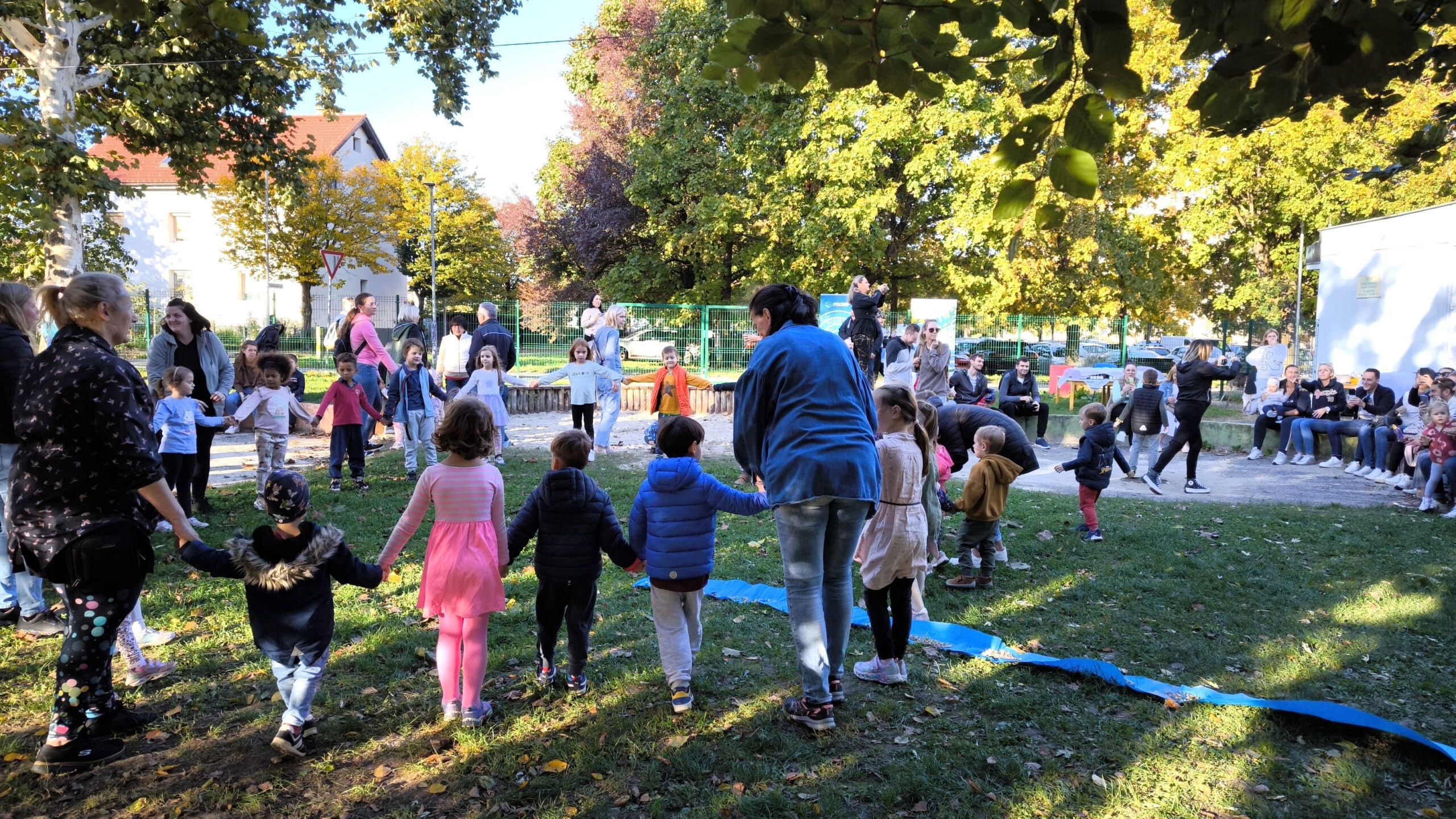
UPSURGE and children’s week at the Pekrski potok
Las week Maribor joined the children, parents and teachers at the Otona Župančič Maribor Kindergarten, unit Mehurčki, as part of the UPSURGE project. They celebrated Children’s Week with a chestnut picnic and an educational gathering by the Pekrski potok in the beautiful nature! The event was opened by the head of the kindergarten unit with…
-
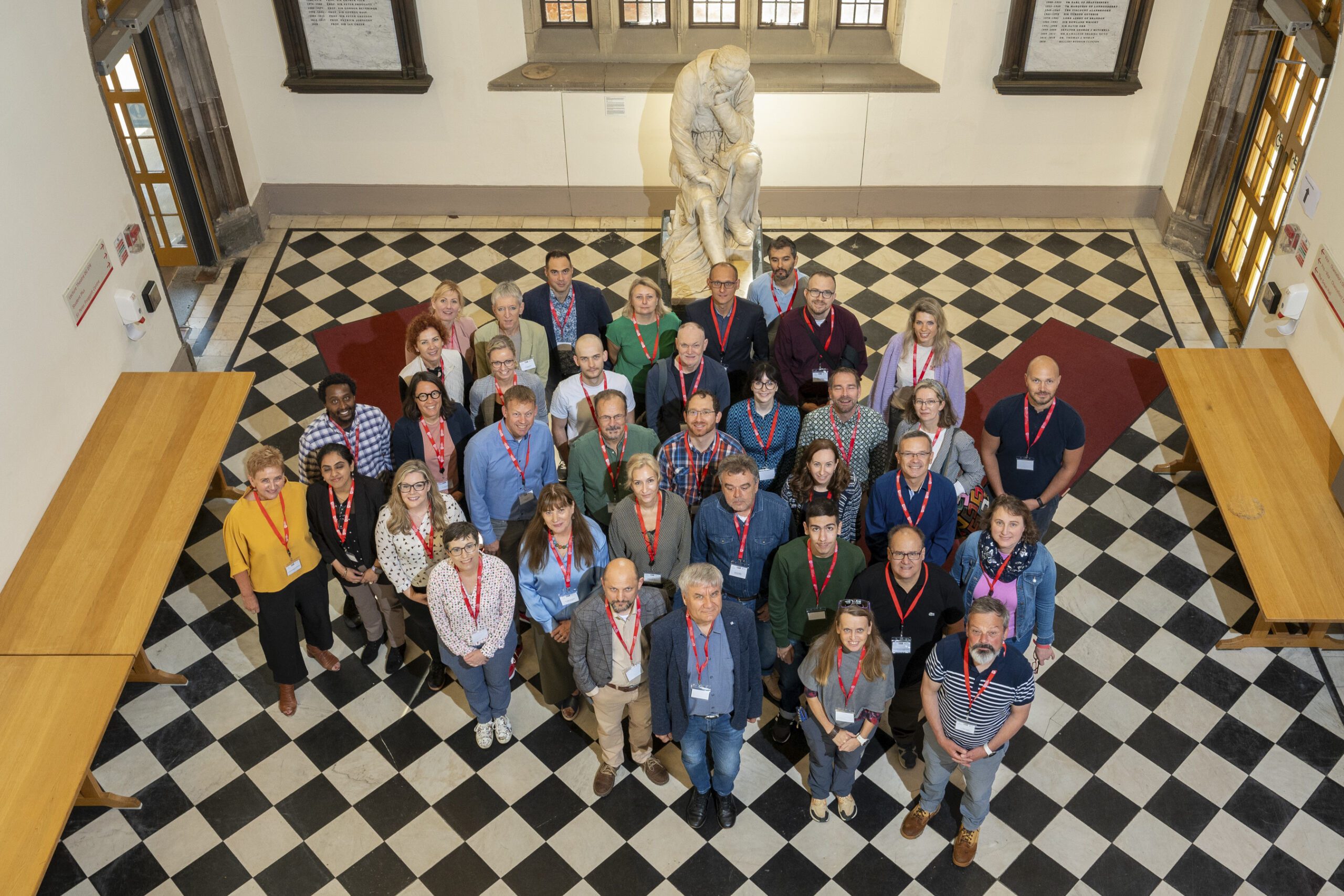
UPSURGE Project Group Meeting in Belfast
On September 18-20, 2024, the UPSURGE project partners met in Belfast, Northern Ireland. During the three-day Project Group Meeting, held at Queen’s University Belfast, all work packages were discussed in detail. The partners presented the results of their activities, clarified doubts and exchanged experiences. There was also an opportunity to see a realized example of…

